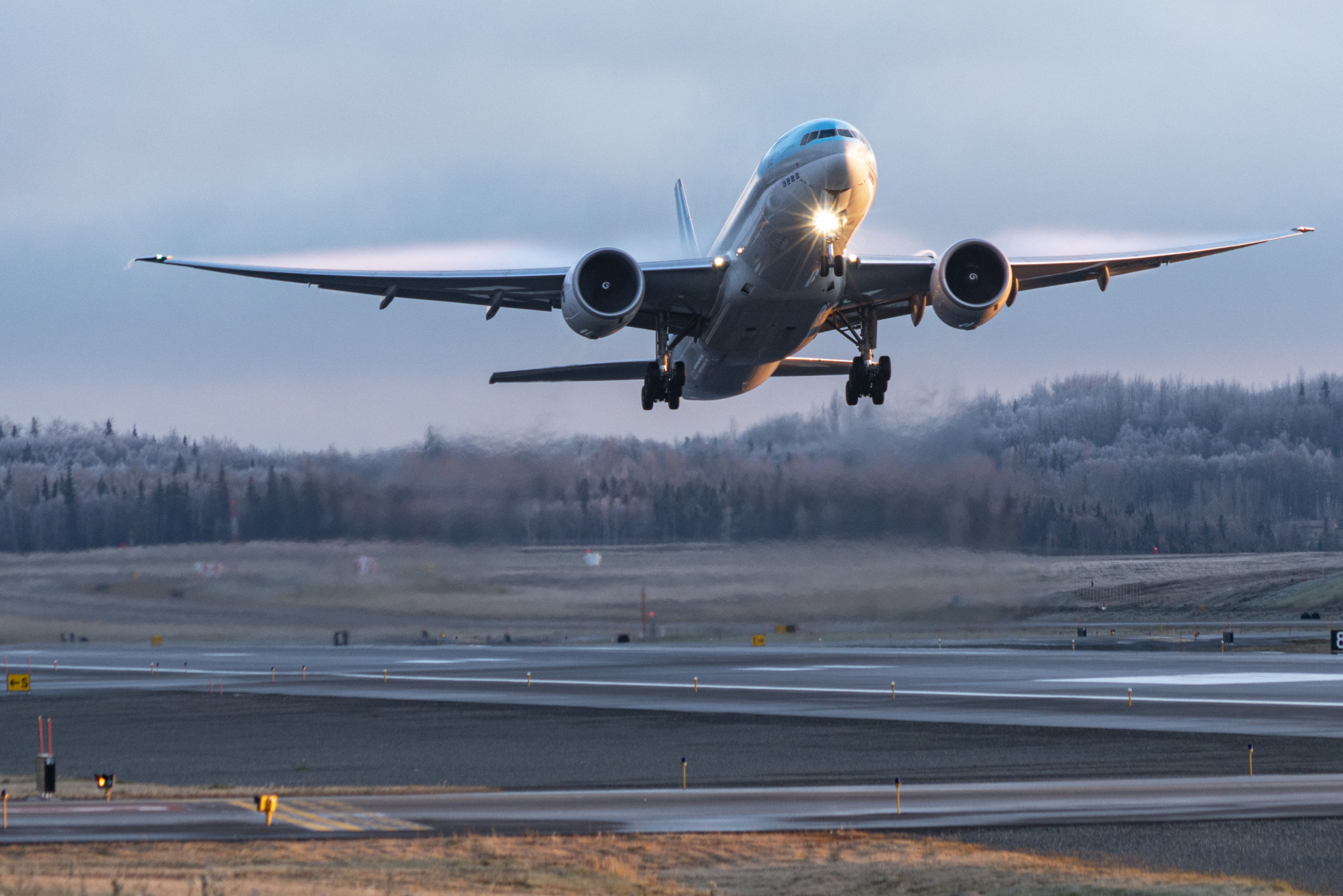
If you’re a new pilot, you are most likely used to uncrowded skies and smaller airfields. But what if you step into big airfields and navigate through crowded skies and runways? Say, a controlled Class B airspace.
This airspace surrounds some of the nation’s most significant and busiest airports. Thus, it only lets in specific IFR and VFR aircraft, that too after prior approval from the Air Traffic Controller (ATC).
The airspace comprises three other areas that can be individually tailored and may have 2 or more layers. Hence, it becomes confusing at times how to fly through this airspace class. Read on as I present all the information to you in the easiest of ways.
What Is Considered Class B Airspace?
Class Bravo (B) airspace is the 2nd most restrictive airspace after Class Alpha (A) airspace. It starts from the ground and extends up to 10,000′ Mean Sea Level (MSL.) However, Denver and Atlanta are two exceptions here.
While the Delta extends up to 12,000′ MSL, the ceiling of the Atlanta is 12,500′ MSL due to high altitudes.
Structure-wise, Class B airspace resembles an upside-down wedding cake. And here’s why.
- The lowest part of the airspace starts from the ground and extends 10 nm laterally.
- The 2nd layer extends 20 nm from the airport.
- And the final layer or shelf extends 30 nm from the airport.
Being the 2nd most restrictive airspace, every pilot must obtain ATC clearance to fly within or around the Class B airspace. Two-way radio communication is another necessity to fulfill.
If proper two-way radio contact has been established between the pilot and ATC, but the latter has kept the pilot on standby, no entry will still be allowed in the aircraft.
This is the main difference between Class B and D airspace. As in Class D, merely a two-way radio contact is necessary to fly within or around the airspace; even if there’s no ATC approval.
Visibility, Cloud Clearance, Equipment, And Requirements
Visibility & Cloud Clearance Requirements
The visibility requirement is 3 Statute Miles. And the plane must stay clear of the clouds.
It’s worth noting that most aircraft in this particular class are IFR planes. But certain airports allow VFR aircraft as well. The only conditions are at least 1 SM visibility and the pilot must stay clear of the clouds.
|
Class B Airspace |
Altitude (in MSL) |
Visibility Requirements (in Statute Miles) |
Cloud Clearance Requirements |
|
Below 10,000 MSL |
3 |
Stay clear of clouds |
Equipment Requirements
A few pieces of equipment are crucial for flying in this airspace. For example, a two-way radio is the most significant requirement without which no entry is permitted to the airspace. 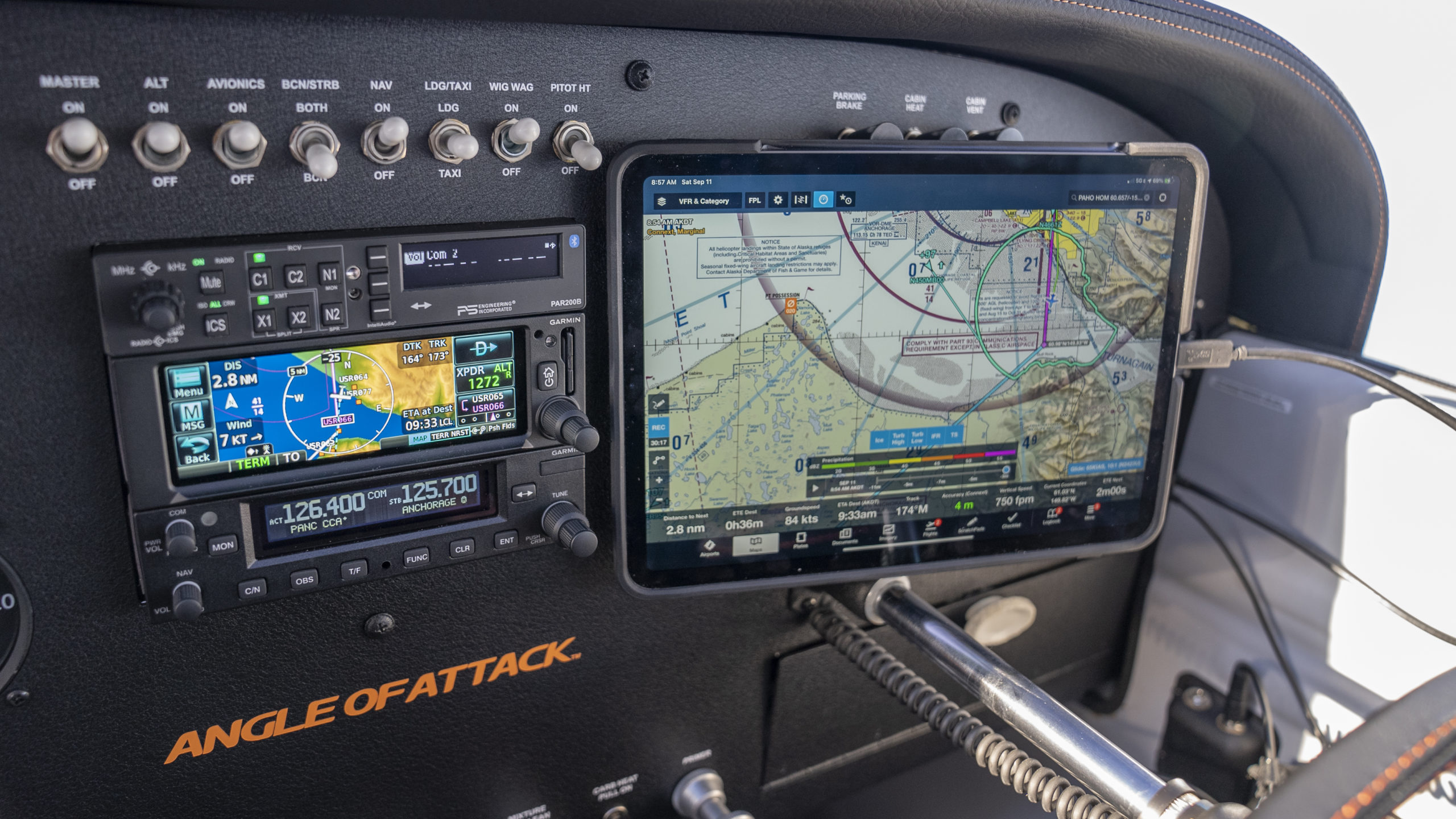
Furthermore, an altitude-reporting transponder with ADS-B Out is required for two purposes:
- To provide separation within the class
- While operating within 30 nm of the Class B airport
Pilots also need not contact the air traffic controller if flying underneath this airspace.
Pilot Requirements
Students are not permitted in most of the airports operating within Class B airspace. However, there are certain areas for student pilots to explore, that too with restrictions. For example, they must have appropriate training and an endorsement from a certified flight instructor.
Private Pilot’s License (PPL) is the minimum requirement to enter Class B airspace. Here are a few airports per the Aeronautical Information Manual that prohibit student pilots.
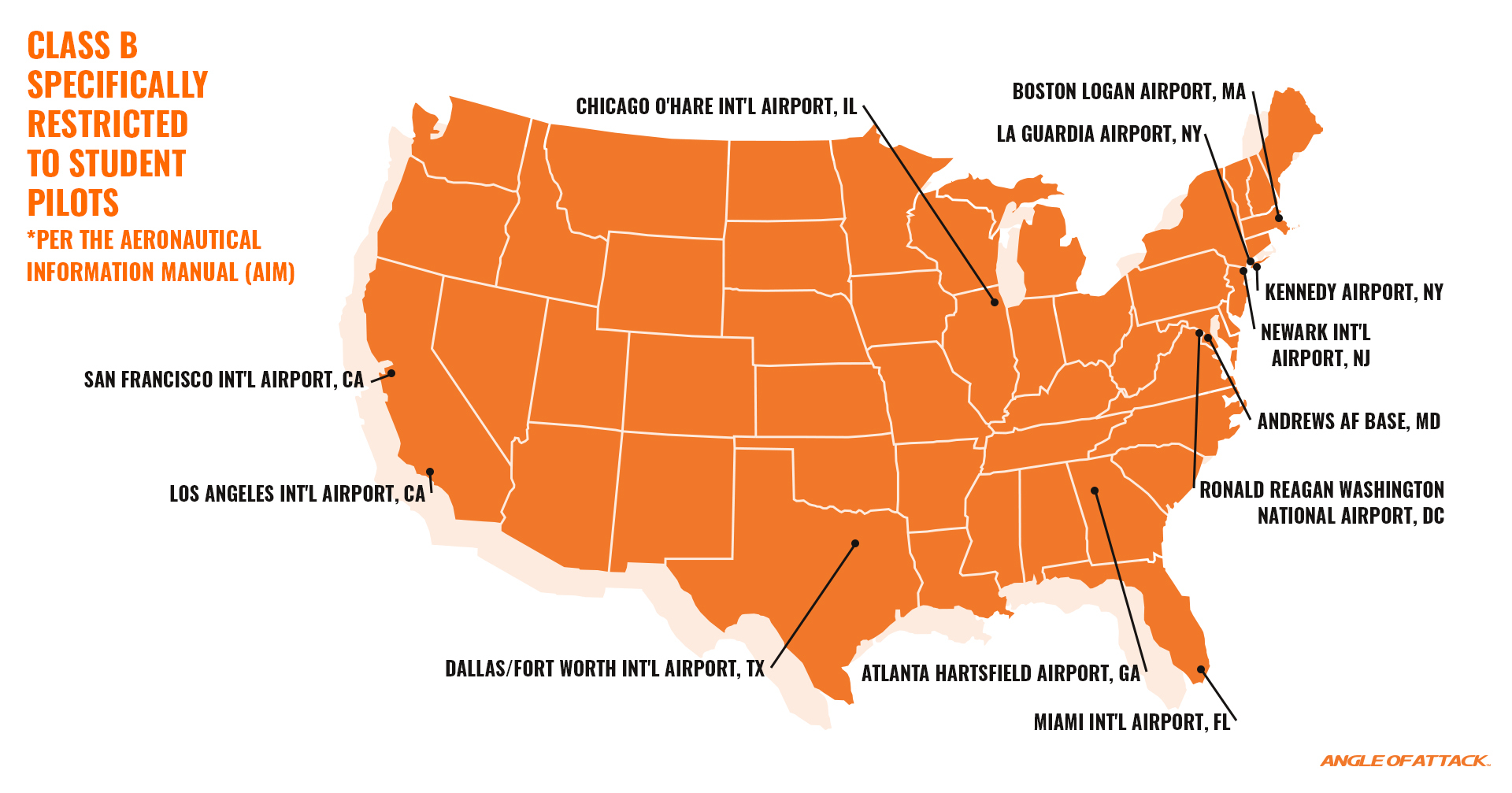
What Is The Difference Between Class B And Class C Airspace?
Although Class B and C belong to the same controlled airspace category, both airspaces differ a lot. For example, airspace shape, ATC clearance requirements, airport type, traffic volume, and more.
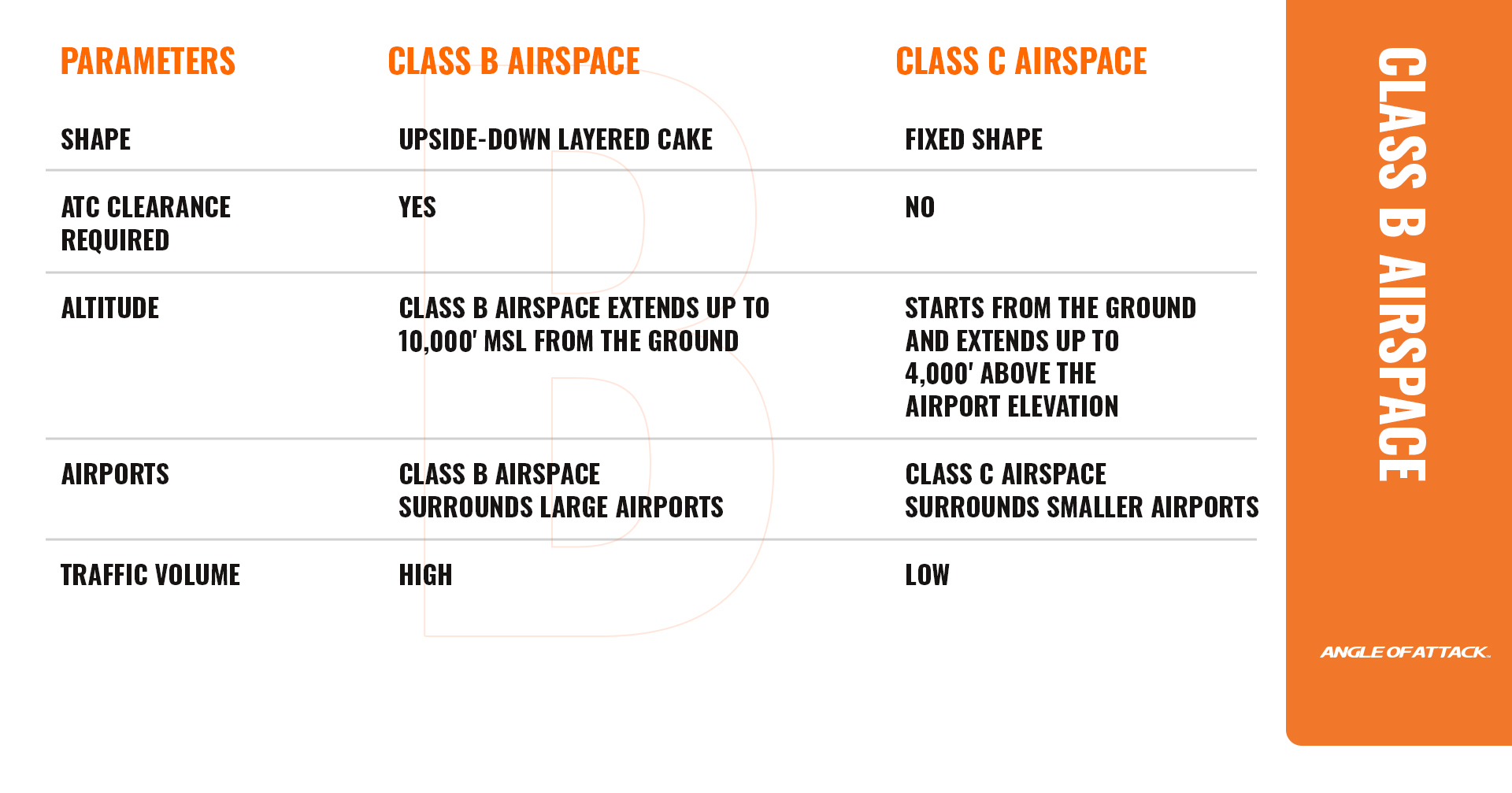
Is It Controlled?
Yes, it is controlled. Since it encompasses the nation’s busiest airports and caters to a large volume of aircraft, ATC permission is required to fly within and around this airspace class.
What Is The Maximum Permissible Speed?
If an aircraft is flying under 10,000′ MSL, the maximum permissible speed is 250 knots. If an aircraft is flying at or above 10,000′ MSL, it can fly faster than 250 knots. However, ATC recommends a lower speed to effectively manage air traffic.
However, since most Class B airspace ends at 10,000′ MSL, the speed restrictions don’t matter much.
So, here you go. It must now be clear to you why Class B airspace is the 2nd most restrictive and what all is required to fly through it. Resembling an upside-down layered cake, it comprises three other areas of the airspace.
Unfortunately, student pilots aren’t permitted inside Class B airports with a PPL being the minimum requirement to do so. Thus, you must get yourself a PPL from a reputed pilot training school.
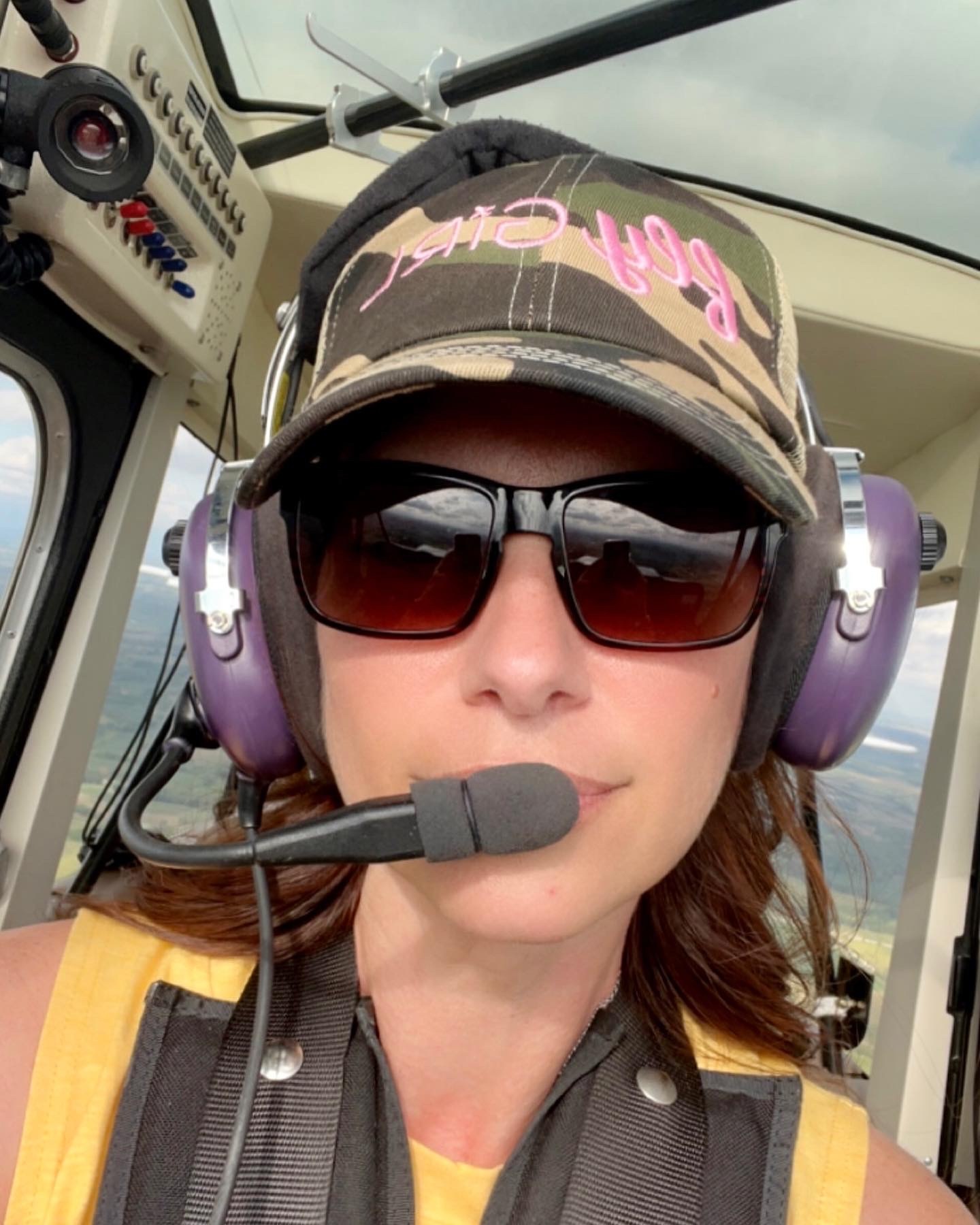
Karey grew up and obtained her in private pilot’s license in Central Iowa. She fell in love with tailwheel aircraft during her primary training and obtained a tailwheel endorsement the week following her private pilot checkride. She is eager to obtain her seaplane rating and is merging her passion for flying with her prior work career. Karey has a background in marketing, editing, and web design after graduating from Simpson College. When she is not flying or working, Karey enjoys anything related to technology and admits she can be a bit of a nerd. She also has discovered a love for virtually all outdoor pursuits, with a special fondness for climbing, shooting, and hiking.

Stay Connected
Be the very first to get notified when we publish new flying videos, free lessons, and special offers on our courses.





